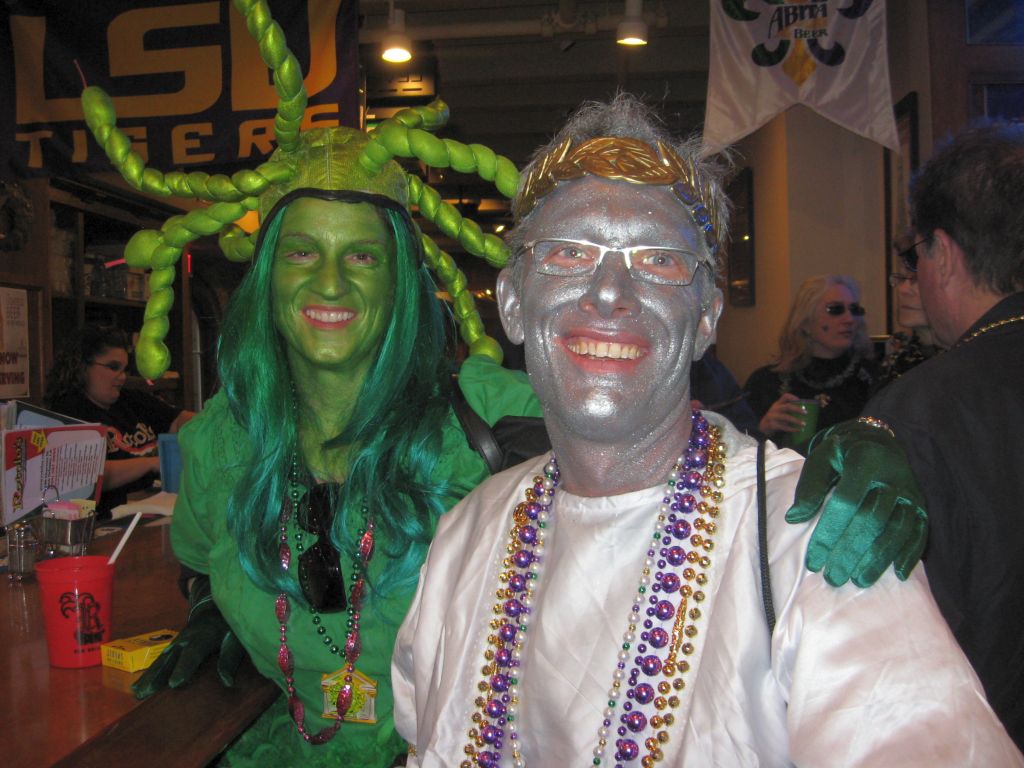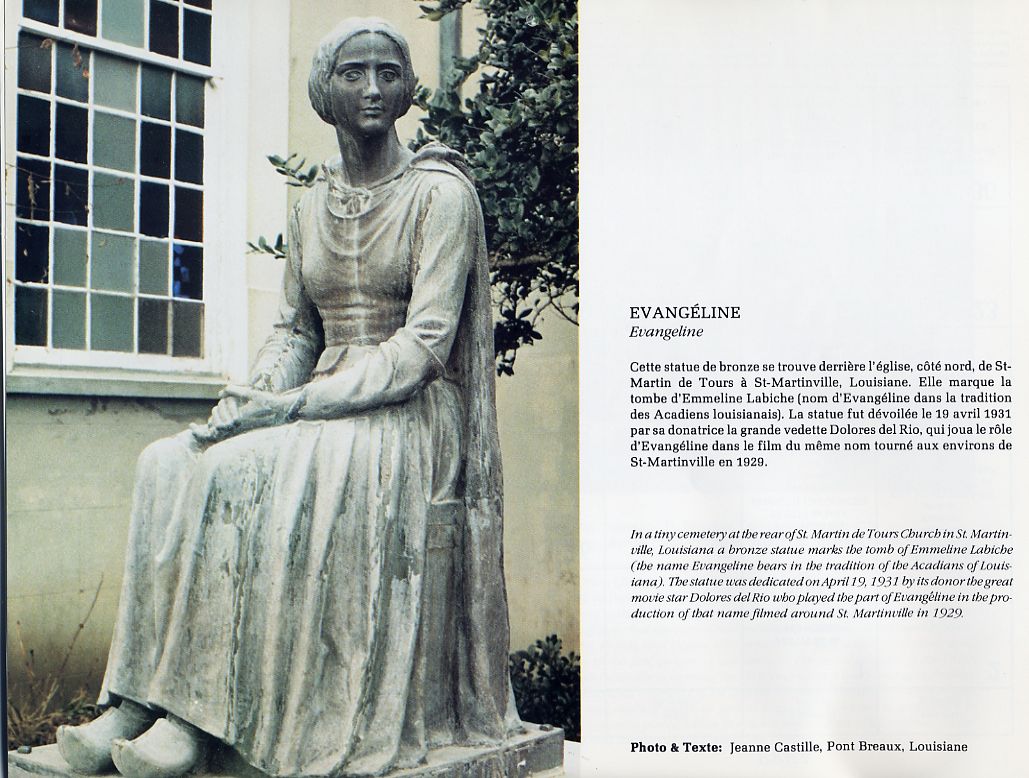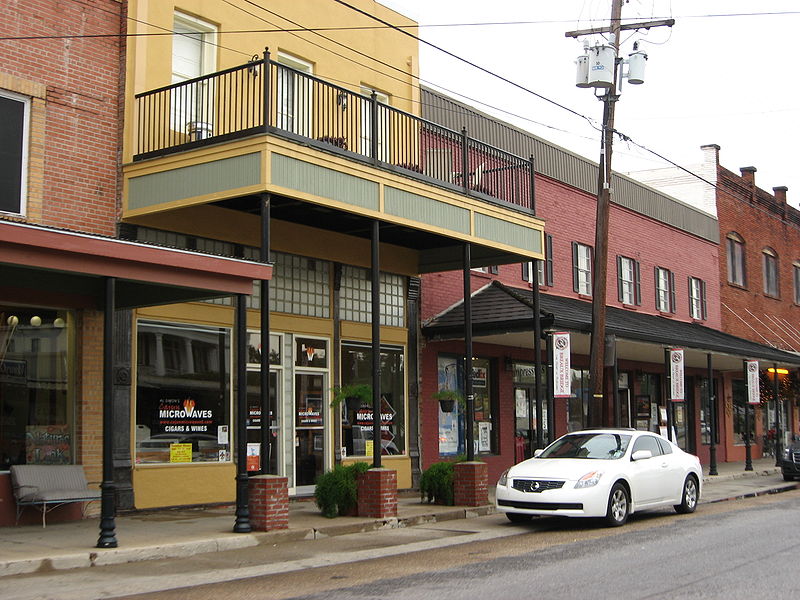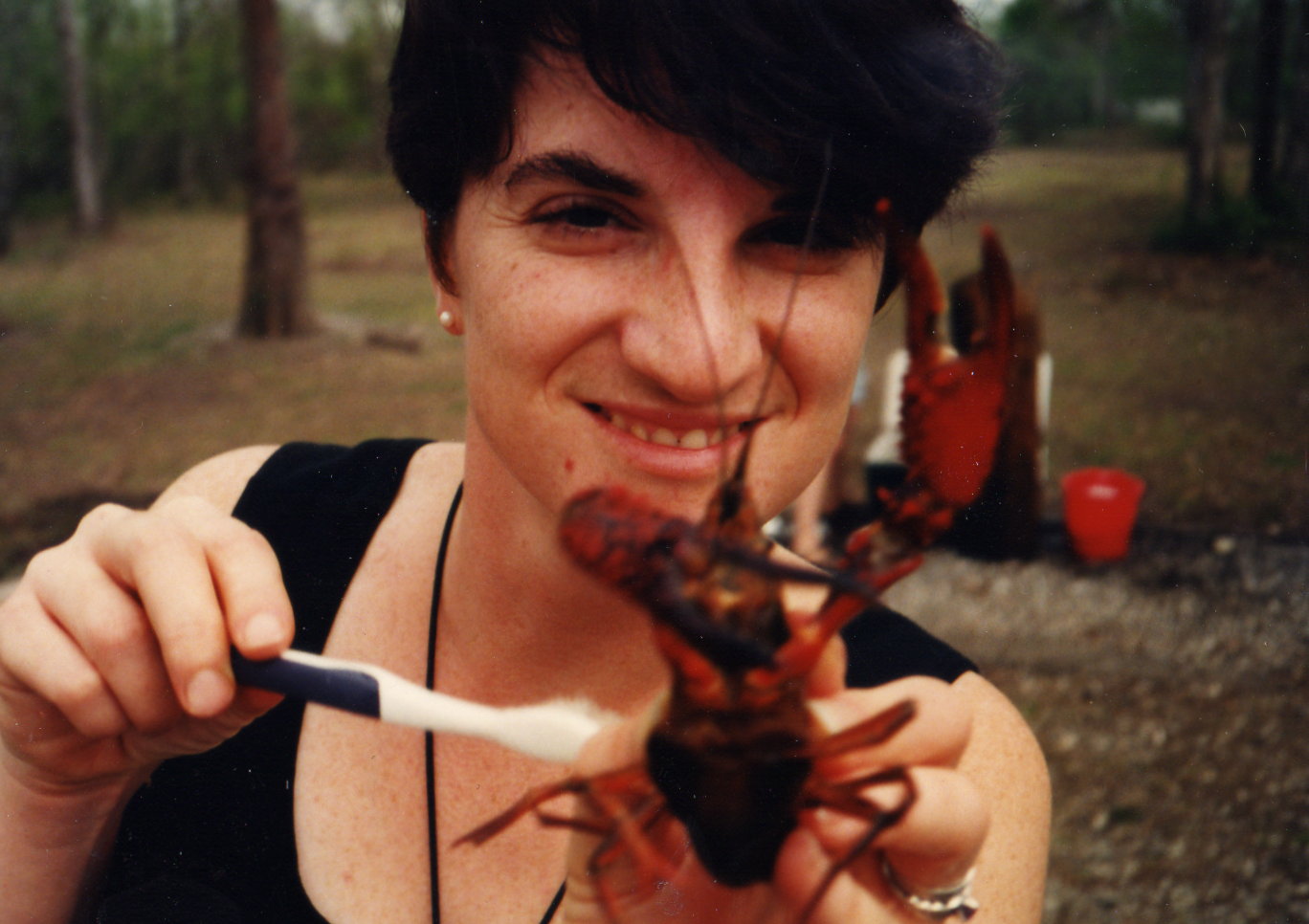Blue Highways: Delcambre, Louisiana
Unfolding the Map
Click on Thumbnail for MapWilliam Least Heat-Moon (LHM) drives through Delcambre, leading me to muse on things in Cajun country that I missed doing when I had a perfectly good chance while living in New Orleans. Ah, well. I still have 40-50 years left to do it. To see where Delcambre sits on the journey we are traveling, click on the thumbnail at right. Anyone know about the Cajun country progressive poker game in a pirogue? Just wondering...
Book Quote
"I took Louisiana 14: roadsides of pink thistle, cemeteries jammed with aboveground tombs, cane fields under high smokestacks of sugar factories, the salt-domed country, then shrimp trawlers at Delcambre."
Blue Highways: Chapter 3, Part 14
 A boat at Delcambre's Shrimp Festival. Image at EatLikeANative.com. Click on photo to go to host site.
A boat at Delcambre's Shrimp Festival. Image at EatLikeANative.com. Click on photo to go to host site.
Delcambre, Louisiana
One of the things that I missed while living in Louisiana were three or four events that I heard take place in many towns in Cajun country. I really wished I had taken time to do these things, though as I look back on it, being a graduate student did limit my time especially toward the end of my stay in New Orleans when I was studying hard for my comprehensive exams. Regardless, I still have some regrets I didn't do these things.
One thing I didn't do was attend a Cajun Mardi Gras. There isn't as much of the pomp and spectacle of a Mardi Gras in New Orleans, but I heard and read that these events are very nice. Before I talk about it though, let me rant for a moment while I have the speakers box about some misconceptions of Mardi Gras.
 My wife, Megan, and I in costume at Mardi Gras 2010 in the French Quarter in New Orleans.I speak to a lot of people who tell me that they would NEVER go to a Mardi Gras in New Orleans. They see the pictures and film of people on Bourbon Street drinking, puking and flashing their naughty parts for beads. These people doing those things are TOURISTS!!! They come to New Orleans thinking that is what is supposed to happen on Mardi Gras, and they make it happen. They stay on Bourbon Street. Unfortunately, that is the view that most people get of Mardi Gras. Snoop Dogg's girlie videos done there don't help the image. The Mardi Gras I know is family friendly. It is celebrated in parades through Uptown, where children are set at the top of stepladders and get more beads thrown to them than anyone. It is where cookouts happen as people wait for the huge, long parades with fantastic floats and masked riders. It is a day where everyone is friendly to each other. My Mardi Gras also happens in the French Quarter on Fat Tuesday, where my wife and I walk around in costume and check out the costumes of locals. Sure, there's some risque ones, and you might see an occasional naked person, but that's the exception not the norm. The norm is families with children, enjoying what literally amounts to a fun Halloween/Christmas atmosphere in February or sometimes March. So go see a Mardi Gras!
My wife, Megan, and I in costume at Mardi Gras 2010 in the French Quarter in New Orleans.I speak to a lot of people who tell me that they would NEVER go to a Mardi Gras in New Orleans. They see the pictures and film of people on Bourbon Street drinking, puking and flashing their naughty parts for beads. These people doing those things are TOURISTS!!! They come to New Orleans thinking that is what is supposed to happen on Mardi Gras, and they make it happen. They stay on Bourbon Street. Unfortunately, that is the view that most people get of Mardi Gras. Snoop Dogg's girlie videos done there don't help the image. The Mardi Gras I know is family friendly. It is celebrated in parades through Uptown, where children are set at the top of stepladders and get more beads thrown to them than anyone. It is where cookouts happen as people wait for the huge, long parades with fantastic floats and masked riders. It is a day where everyone is friendly to each other. My Mardi Gras also happens in the French Quarter on Fat Tuesday, where my wife and I walk around in costume and check out the costumes of locals. Sure, there's some risque ones, and you might see an occasional naked person, but that's the exception not the norm. The norm is families with children, enjoying what literally amounts to a fun Halloween/Christmas atmosphere in February or sometimes March. So go see a Mardi Gras!
That's my rant. Mardi Gras in the Cajun country is even more down home. Floats, but not as fancy. Costumes, but not as decked out. Neat events like chasing a chicken down. Great food like gumbo and etoufee and jambalaya. Great music. Even more of a family atmosphere because there aren't hundreds of thousands of people packed in. All in a small town atmosphere. Having grown up in a small town, I find myself at home in such celebrations.
Another activity that takes place in smaller municipalities in Cajun country, and which LHM's passage above reminds me of, is the blessing of the fleet. Delcambre blesses its fleet as part of an annual Shrimp Festival. So do other bayou towns with a fleet and a passage to the gulf. Every year, the shrimp trawlers head out for the first fishing trip of the season, and as they pass by, a priest stands at dockside and blesses them as they go by. Again, it is a festive occasion, since many families depend on the shrimp season for the livelihoods. This is why catastrophic events such as Hurricanes Katrina and Rita and the BP oil spill can really cause a blow to the regional economy - no shrimp means very difficult times for many families. The blessing of the fleet with holy water is one way which these fishermen try to ensure a good season. It might help - we don't know - and it certainly can't hurt.
A third activity that I heard takes place down in the bayous is a progressive poker game where you go from bar to bar in a pirogue. A pirogue is a small boat that is paddled or poled in bayou country. I don't know if this actually exists, and I can't find any mention of it when I do a search, but if it does it sounds really cool. One could go from backwater bayou bar to backwater bayou bar lazily in a boat, play his or her hand, maybe win some money, but also maybe meet some really cool people in the process. And drink Dixie Beer. Doesn't sound like a bad deal to me.
Once again, I find I'm kicking myself for not doing these things when I had the chance. It's an open secret that I think it would be wonderful to live in New Orleans again - it's a place that one can grow to love despite the ever present daily difficulties and annoyances of living there. Poorly maintained streets, crime, the third-world local and state bureaucracy, for examples, are things one has to deal with if one wants to put down roots in New Orleans. On the other hand, it is a place that knows how to have fun when it's warranted, and how to exist despite what the rest of the country thinks. I'm just weird enough to live there, and maybe I will again someday. And if I do, I most certainly will take advantage of visiting Cajun country and trying to catch a glimpse of a culture that human progress in all its forms may make disappear someday.
If you want to know more about Delcambre
Delcambre, Louisiana for Kids
Delcambre Shrimp Festival
Louisiana Tourism Site: Delcambre
Wikipedia: Delcambre
Next up: Abbeville, Louisiana




 Thursday, December 23, 2010 at 5:29PM
Thursday, December 23, 2010 at 5:29PM




